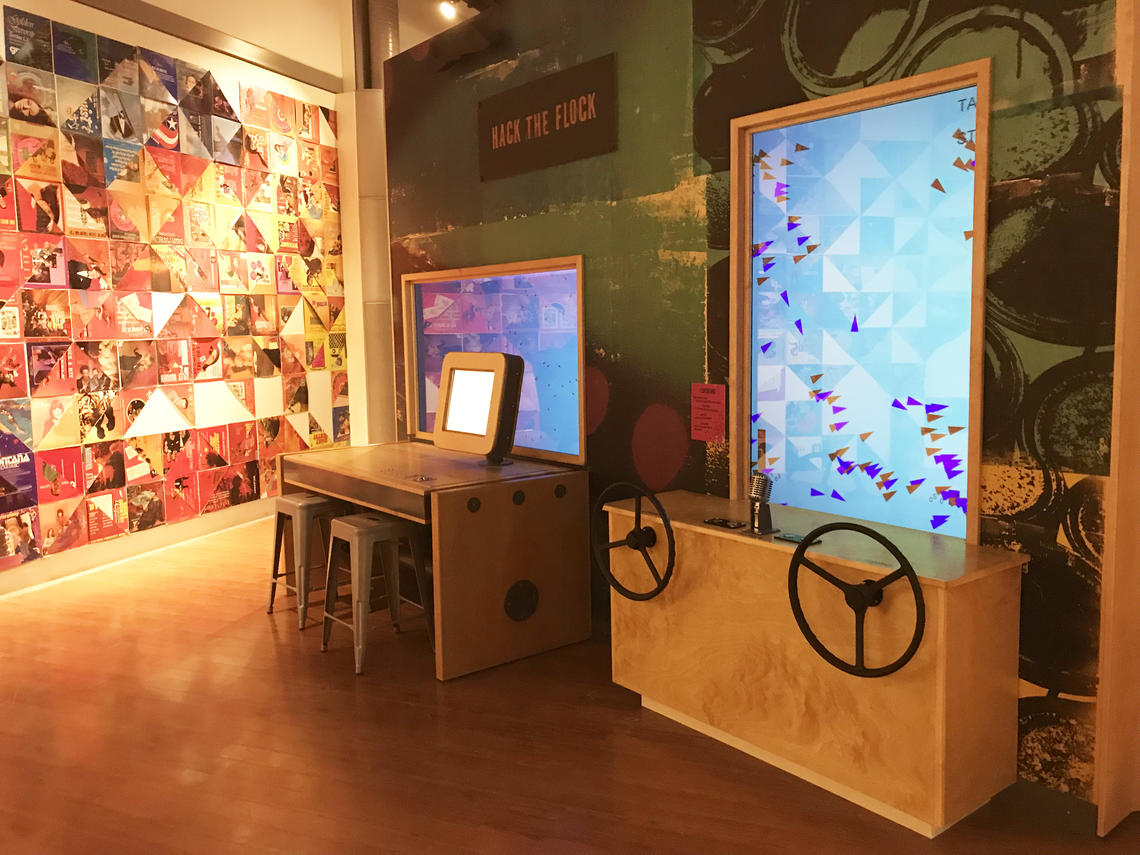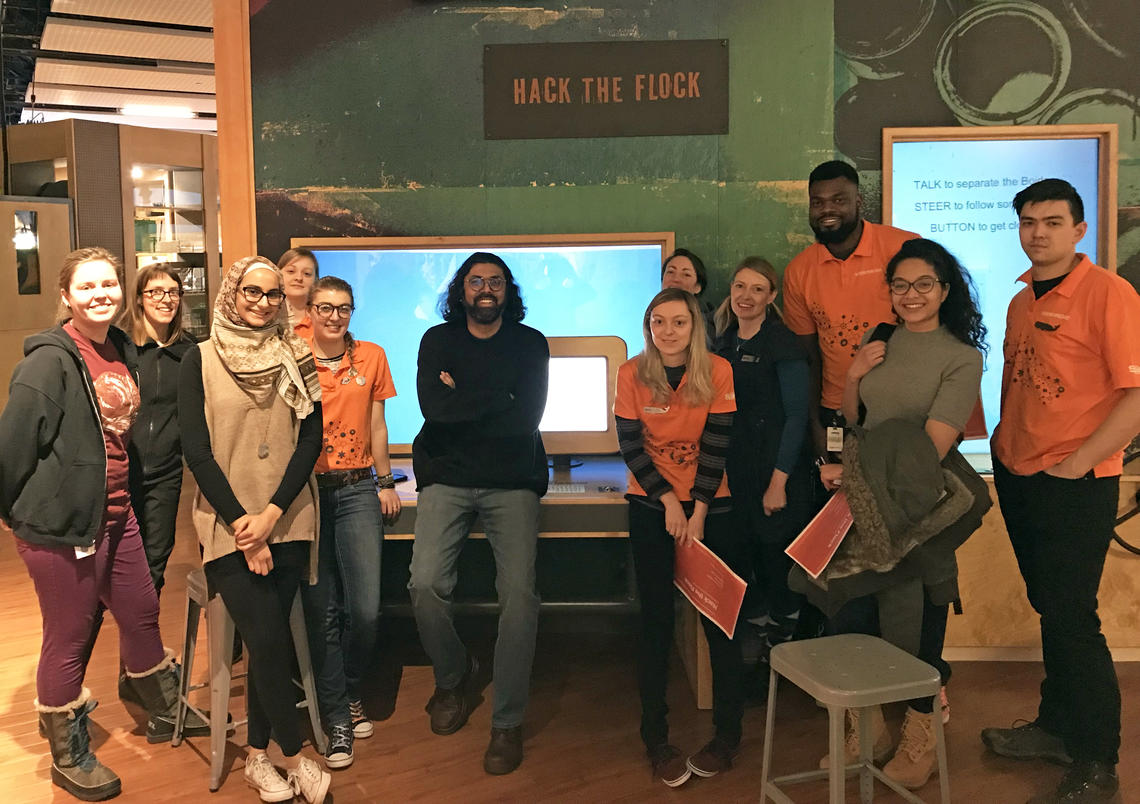March 14, 2018
Computer coding challenge lets young learners 'Hack the Flock'

Visitors can use two stations to define the appearance and actions of the ‘Hack the Flock' BOIDS.
Pratim Sengupta
Pratim Sengupta wants people to break his toys. More accurately, the research chair of STEM education at the University of Calgary's Werklund School of Education hopes young visitors to TELUS Spark will hack the computer code he has written for a new exhibit — and have some fun doing it.
The most striking aspect of the aptly titled Hack the Flock installation are the coloured triangles that zoom across the surface of two large monitors. The triangles, known as BOIDS, align, approach and avoid each other just as a flock of birds or a school of fish would. But what makes this exhibit unique is how visitors to the second floor of the science centre can engage with the flock.
Sengupta and his team, which includes Weston Sandberg, BEd’17, and research assistant Robert Brown, collaborated with TELUS Spark champion of engineering communication Kat Dornian, BSc’09, on the creation of two separate stations that allow anyone to change how the BOIDS interact, look and behave.
The first station provides an easy entry point with which to manage the flock via two large steering wheels and a microphone that looks like it would be quite at home at Sun Studio. Once visitors gain a level of proficiency with the exhibit they can try their hand at the second station and use the computer to take total control of the flock by rewriting the code that defines the appearance and actions of the BOIDS.
“Children are usually surprised when they realize that can change anything in the code — usually they are used to not having access to such powerful scientific code. They can play with colour, shapes, use their voices, and collaborate with their friends and strangers. All of that is exciting,” says Sengupta.
Not only is it exciting, Sengupta believes it is also challenging and fun.
“The playful entry into the code — the steering wheels, the microphone, the buttons for changing the size of the BOIDS — help draw the children in. It is both absurd and powerful, and allows the children to use their imagination.”

Pratim Sengupta's team aimed to provide young learners with a public computation experience.
Pratim Sengupta
Coding in public spaces
In addition to providing a fun experience, Sengupta says the goal of the exhibit is to democratize computer coding. He believes much of the work being done in STEM disciplines today, including scientific computing, is performed in closed spaces by professionals who function as gatekeepers. The work these professionals create is then handed down in finished form to a passive general public. This is something Sengupta hopes to change.
"We believe ‘real science’ and ‘real code’ should be open and accessible to anyone — not only scientists and computer scientists; these fields should be reframed as a public experience or public computation, as my colleague Marie-Claire Shanahan and I have termed this genre of computation. As well, we believe the public should be free to tinker with or hack the science that is shared. Our hope is that providing open science and coding in public spaces will result in greater participation in authentic STEM practices by non-professionals."
Sengupta adds there is a tendency to simplify or "dumb down" coding for K-12 children. So while his team did provide explanatory comments in the code to aid young learners, the exhibit avoids this propensity by using open source languages developed for professionals.
"Hack the Flock encourages a playful approach but doesn't dilute science or coding. The science and the coding challenges young minds but we find that they like the challenge and that children as young as six or seven years old can meaningfully engage with computational science without the need of a child-friendly programming language.”
Success measured by time spent, experience gained
The impromptu teamwork the exhibit has engendered is another welcome, if unexpected, finding for the team.
“We noticed that in many cases, more than four visitors, some of them strangers, would collaborate to work with the BOIDS. Public computation is therefore a great opportunity for us to remind ourselves that public education can be both a journey of discovery and invention, and a journey together.”
So, has Hack the Flock achieved its goal of sharing STEM with the public? If time spent immersed in the installation is a barometer for success, then the answer is yes.
"We know that five minutes is considered excellent when it comes to exhibit interaction and, as many visitors are inexperienced with coding, the exhibit can be daunting at first, so we're gratified that children and youth engage from 15 to 60 minutes.”
Sengupta also views success in terms of what he hopes those who spend time with his exhibit come away with. “We hope children begin to understand that computational science can be an imaginative, playful, open and public experience.”
The installation is now a permanent part of the science centre, so go ahead, hack the flock and try to break Sengupta’s toys. He won’t mind.
